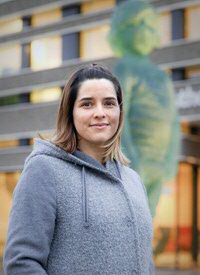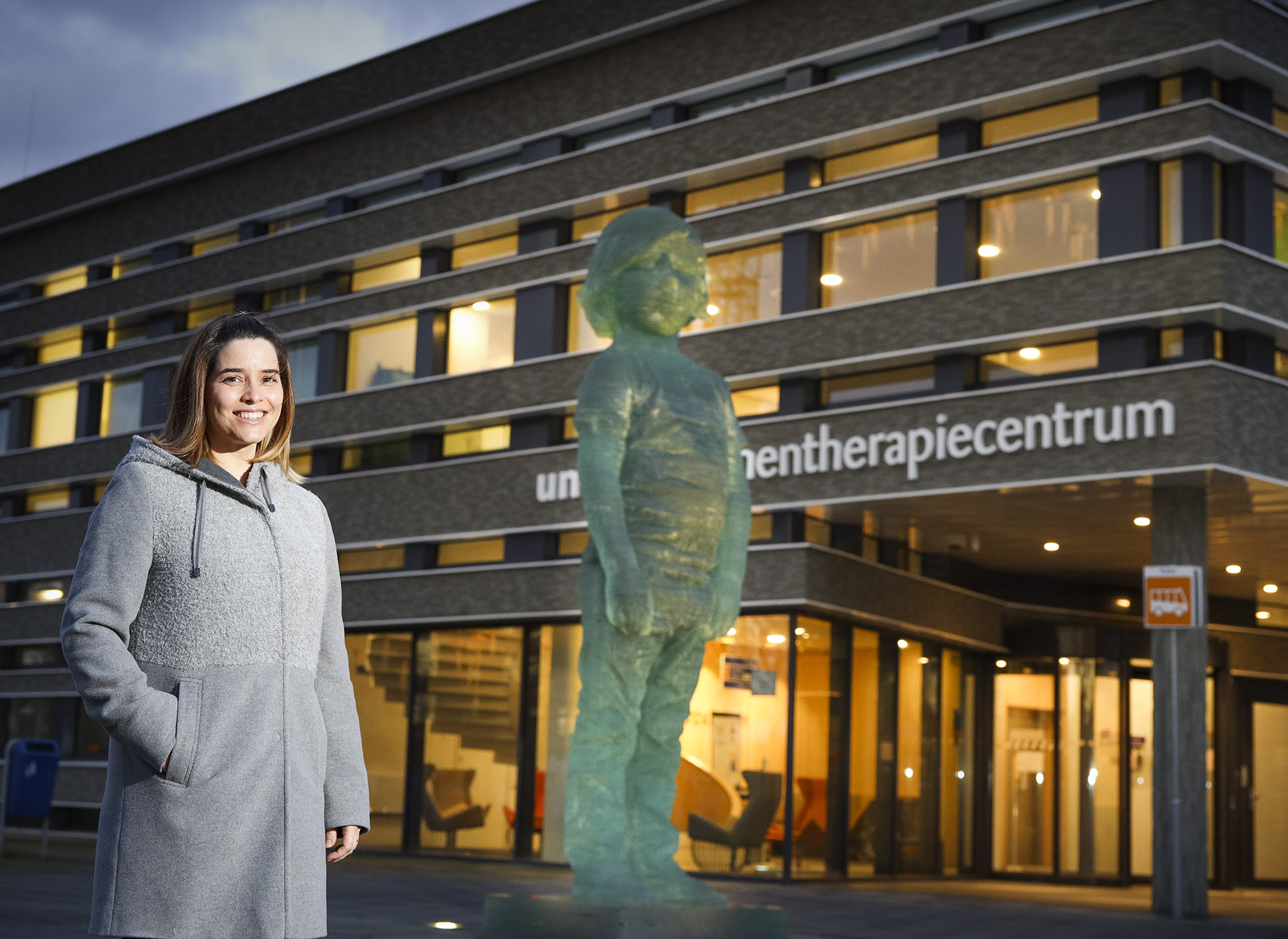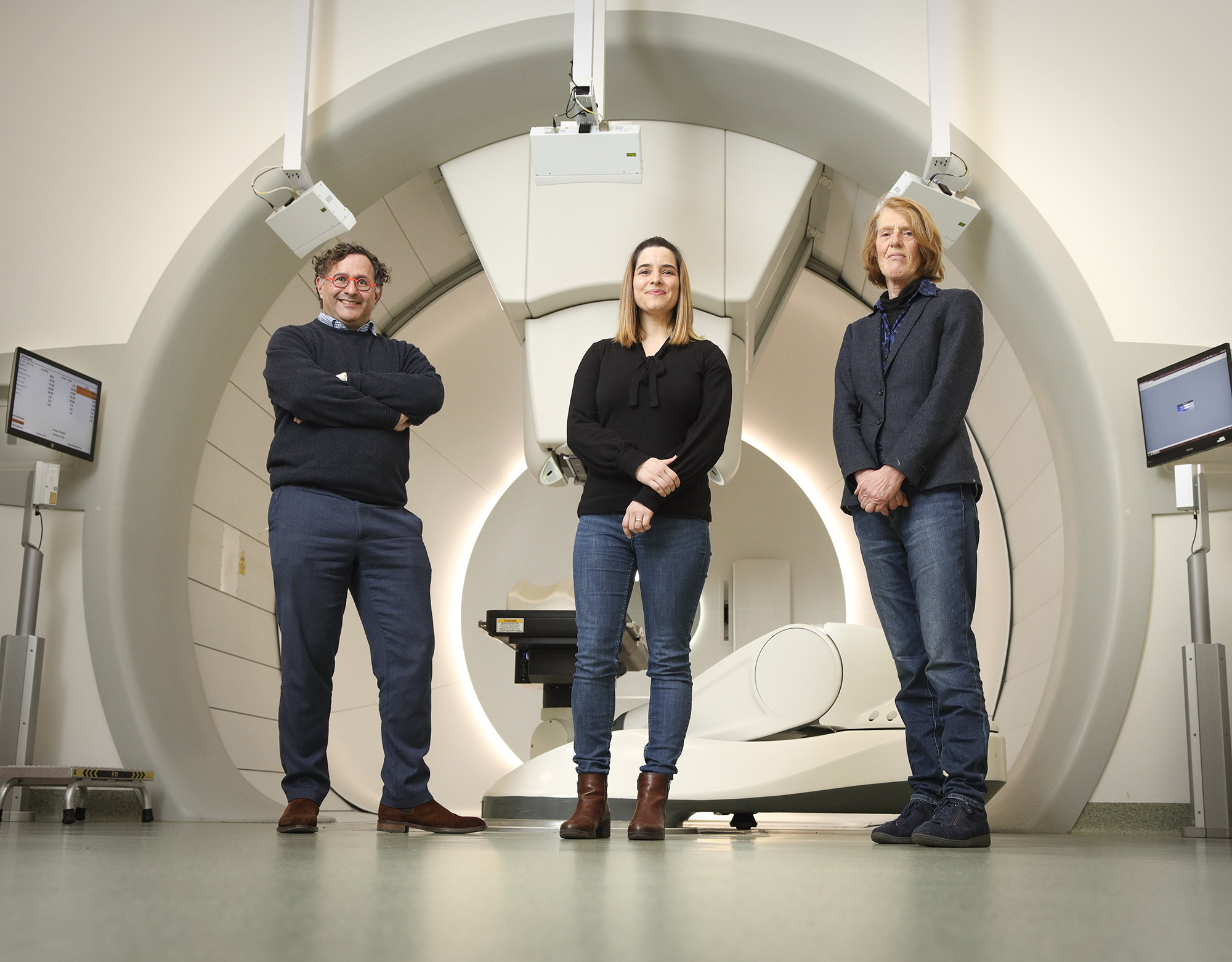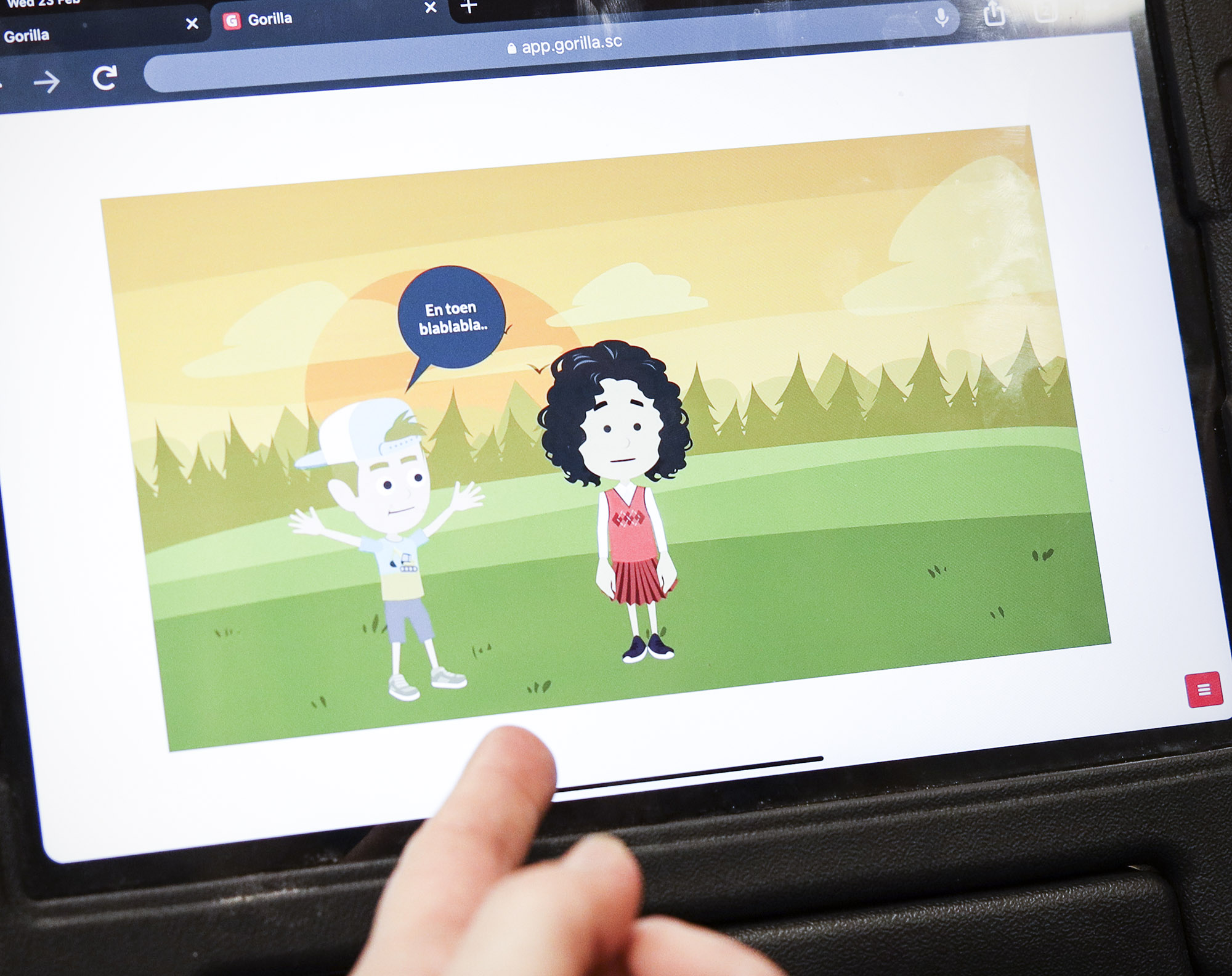Research into language disorders in children with brain tumours
Young children with a brain tumour may develop a language disorder as a consequence of the tumour or the operation, or if the radiotherapy damages the brain. Vânia de Aguiar, clinical linguist and neurolinguist at the Faculty of Arts of the University of Groningen, is about to start research on the question of whether damage to specific parts of the brain increases the risk of language disorders. This knowledge may help in adapting treatments and possibly relieving disorders.
Text: Marjolein te Winkel / Photos: Henk Veenstra

In the Netherlands, approximately 120 children per year are treated for brain tumours. These children undergo surgery to remove the tumour, and some children also need radiotherapy and chemotherapy. ‘Some children have impairments which are consequences of the treatment’, says researcher Vânia de Aguiar. ‘Both the disease itself and its treatment have an impact on the brain, and radiotherapy can also affect healthy tissue. However, those treatments are necessary for survival.’
Cerebellum
Brain tumours in children typically occur at a very young age: between 4 and 6 years. De Aguiar: ‘In the vast majority of young patients, the tumour is in the little brain or cerebellum, at the lower back part of the brain. The cerebellum plays a role, among other things, in the development of language. If it is damaged by the tumour or as a result of the treatment, this could disrupt the child’s language development.’
Possible consequences of language disorders
Language disorders occur relatively often in children who have had a brain tumour and have been successfully treated for it. Such a disorder may affect a child’s school performance, also in the longer term. "Previous research has taught us, for example, that children who have been treated for a brain tumour are less likely to finish secondary school than their peers. This is why we want to know more about the link between brain damage, radiotherapy, and language disorders."

Brain scans
De Aguiar has started a study in February 2022 to find out how treatment affects language development in children. She will use 3D scans (MRI) to see which regions of the brain are damaged by the tumour or the radiotherapy. ‘The scans show where the damage is, both in the cortex, the outer layer of the brain, and in the connections between the various cortical areas. One thing we measure is the thickness of the cortex. This changes with age in healthy children, and these measurements can tell us whether or not this change is the same in children who survived a brain tumour. Atypical brain development may explain some of the language problems that these children have. And damage in the connections between the various brain regions may also help to explain language disorders.’

Proton radiation
Tumours can be irradiated in two ways: with traditional photon therapy, which has been around for a long time, or with the relatively new proton therapy. Photons irradiate not only the cancerous cells but also the healthy cells surrounding them. ‘Proton radiation is more precise, and thus does less damage to healthy tissue’, De Aguiar explains. The UMCG has had its own Proton Therapy Centre since 2015.
‘Most children with cancer undergo surgery at the Prinses Máxima Center in Utrecht and then come to Groningen for their radiotherapy. I work together with doctors and with the researchers from both centres to plan my research well, bearing in mind the treatment that the children undergo and the neuropsychological problems they have. In addition, I study the MRI images together with researchers from the UMCG and Utrecht who are specialized in this field.’
Language tests
In order to determine the language level of young patients, De Aguiar will conduct tests at three points in time: shortly after the surgery, after one year, and after two years. ‘We will test the children’s ability to learn and conjugate verbs, and to make and understand sentences – for example understanding active and passive sentences, putting verbs in the correct tense, and placing words in the right order.’
Want and omdat
One example involves Dutch sentences containing the adverbs want and omdat, both meaning ‘because’. The sentence ‘she is drinking water because she is thirsty’ translates to Dutch as: Ze drinkt water, want ze heeft dorst. However, De Aguiar explains, ‘you can also use omdat instead of want, but this changes the order of the last two words in the sentence: Ze drinkt water, omdat ze dorst heeft. "We will use language tests with a game-like format to test whether children are able to construct this type of sentence. This will enable us to determine whether children have trouble with certain words or sentences after their treatment."

Tests with animations
To make the tests more fun for the children, De Aguiar made an animated video that directly addresses them. ‘And the kids speak back at the animated characters. They really enjoy it.’ And that is important, she stresses: ‘We always take the children’s well-being into account. If a test takes too long and a child gets tired, we stop and come back some other time. We are very flexible to make things easier for them.’
Making connections
Once all the tests have been conducted and all scans have been made, De Aguiar will examine the results. Which child has language disorders, and what do this child’s brain scans look like? This way she hopes to be able to make connections between the brain damage and the language disorder. ‘If we can see which parts of the brain can cause language problems, then care providers can bear this in mind when administering radiotherapy and, if this is medically safe, spare these areas by not irradiating them. This is technically possible because proton therapy is so precise.’
Healing and preventing
Most young patients fully recover from a brain tumour in the cerebellum thanks to good treatment. ‘It is therefore important to find out more about the long-term consequences of the treatment,’ says De Aguiar. ‘This will enable us to give advice on the best speech therapy and reduce the risk of language disorders in the future.’
Two grants
Vânia de Aguiar was awarded two grants in 2021: an €800,000 Vidi grant from the Dutch Research Council (NWO) for her research on language development disorders in children with brain tumours, and a €20,000 grant from the Stichting KinderNeuroPsychologie Noord Nederland (Northern Netherlands District Court child neuropsychology foundation). With those funds, she will develop a test to evaluate several cognitive processes necessary to learn words. In this latter study, too, De Aguiar will use brain scans to detect possible anomalies that may be connected to language disorders.
| Last modified: | 28 March 2022 10.17 a.m. |
More news
-
22 April 2025
Liekuut | The United States has always been less democratic than we think
The ferocity with which Donald Trump is eroding American democracy may seem unprecedented. Presidents have used their power to issue executive orders in the past, but not at the pace set by Trump. What if the US is less democratic than we think?
-
12 March 2025
Breaking news: local journalism is alive
Local journalism is alive, still plays an important role in our lives and definitely has a future. In fact, local journalism can play a more crucial role than ever in creating our sense of community. But for that to happen, journalists will have to...
-
11 March 2025
Student challenge: Starting Stories
The Challenge Starting Stories dares you to think about the beginning of recent novels for ten days.
